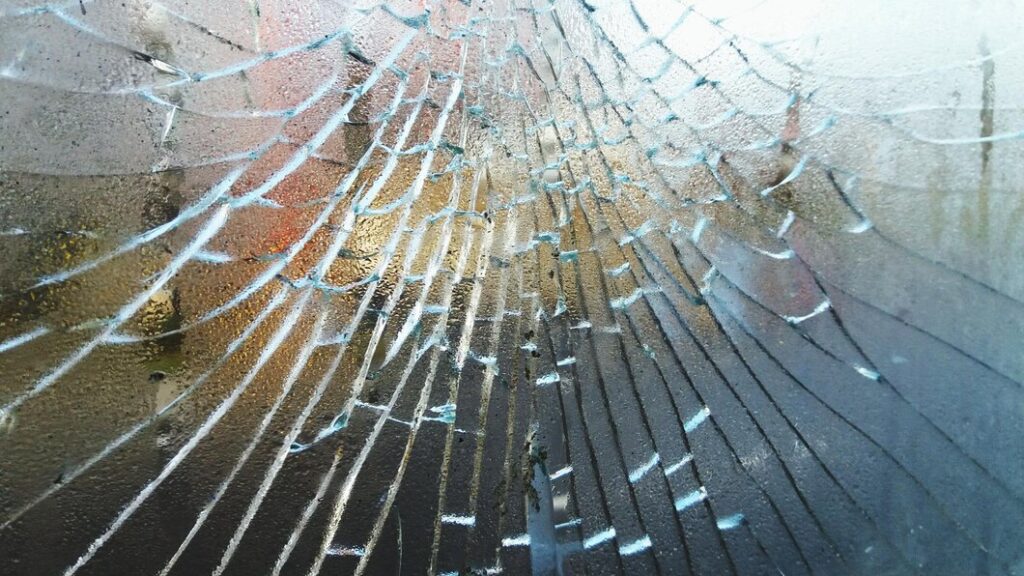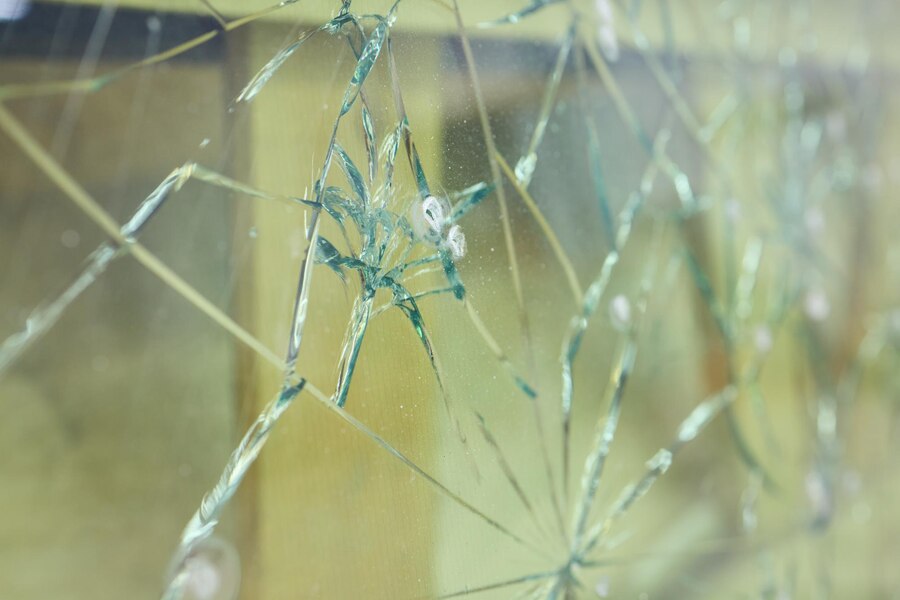When it comes to glass repair, it’s essential to choose a service that provides high-quality workmanship to ensure your safety and satisfaction. In Tucson, as with any city, poor glass repair work can be easily spotted if you know what to look for. Many factors can indicate subpar repairs, from unsightly seams to improper fitting, which can affect the overall performance and durability of the glass. It’s important to be aware of these signs to avoid costly mistakes and potential hazards down the road.
A few things to keep in mind when assessing glass repair work include checking for any noticeable air bubbles, uneven edges, or gaps between the glass and frame. Also, inspect the clarity and transparency of the glass to ensure it matches the original installation. By paying attention to these details, you can avoid the consequences of poor glass repair and ensure the job is done right.
Signs of Uneven Seams in Glass Repair
One of the most noticeable signs of poor glass repair is uneven seams around the glass. If the glass has been improperly cut or installed, you may see gaps or mismatched edges that don’t align correctly with the surrounding surface. These uneven seams can affect the integrity of the glass, leading to leaks or other complications down the line.
A properly installed glass should fit seamlessly into the frame or structure. If you notice gaps, it could mean the repair was rushed or done with low-quality materials. In such cases, the glass may not perform effectively, and you may need to seek a more reliable repair service for a lasting solution.

Identifying Gaps in Glass Installation
Gaps around the edges of repaired glass are an obvious sign of poor craftsmanship. If you notice even the slightest space between the glass and its frame, it could be a result of improper cutting or installation. These gaps can lead to drafts or water leakage, which undermines the functionality of the glass. A precise installation ensures a proper fit without any visible spaces or flaws.
Misalignment of Glass Edges
Misaligned edges are another common issue that occurs in substandard glass repairs. If the edges of the glass don’t match up with the frame or surrounding materials, it can result in a misfit that may lead to operational issues. A smooth, uniform edge alignment is critical to ensure that the glass performs properly and looks aesthetically pleasing. Misalignment indicates a rushed or poorly executed job.
The Importance of a Seamless Fit
A seamless fit is essential for any glass repair. If the glass doesn’t perfectly align with the surrounding structure, it may result in a lack of security and energy efficiency. Uneven seams can cause air leaks, water damage, or structural issues. Be sure to check the fit carefully after a repair to ensure that the glass is seated correctly and aligned with the rest of the framework.
Effect of Poor Cutting on Glass Performance
When glass is poorly cut during the repair process, it can lead to problems such as sharp edges or broken seals. This can ultimately affect the durability and performance of the glass. Proper cutting techniques ensure that the glass fits securely and allows the structure to maintain its intended functionality. If the cut is uneven, it can compromise both the appearance and the safety of the glass installation.
Addressing Poor Quality Materials
Using low-quality materials during glass repair is another factor that can lead to improper fitting and performance issues. Cheap adhesives or inferior glass can cause misalignment, as well as result in uneven seams or visible gaps. Opting for high-quality materials ensures that the repair will last longer, and the glass will remain in place without significant issues. Always inquire about the materials used for repairs before proceeding with the work.
Air Bubbles in Repaired Glass
Another sign of poor glass repair work is the presence of air bubbles within the glass itself. These bubbles often form when the repair process involves improper sealing or low-quality adhesive materials. Air bubbles can distort the view, making the glass appear cloudy or uneven. In some cases, they can even weaken the glass’s overall structure.
Air bubbles are a clear indication that the repair wasn’t done properly. A well-repaired glass should be crystal clear without any visible imperfections. If you notice bubbles, it’s important to address them quickly before they compromise the glass’s durability and aesthetics.
Excessive Adhesive Around the Edges
When glass repair work is subpar, excessive adhesive may be visible around the edges of the glass. This can make the repair look messy and unprofessional. The adhesive should be discreet and not visible to the eye when the job is done properly. Excessive adhesive can also interfere with the glass’s performance, as it may create unnecessary buildup or attract dust.
If the adhesive is applied too thickly or in areas where it shouldn’t be, it can also affect the overall fit and alignment of the glass. It’s important to ensure that only the necessary amount of adhesive is used, and that it’s applied neatly to avoid these issues.
Glass Not Aligned with Frames or Fixtures
Poorly executed glass repairs often result in misalignment between the glass and the surrounding frames or fixtures. If the glass doesn’t fit perfectly into its designated space, it can cause functional issues, such as difficulty closing windows or doors. Additionally, gaps between the glass and frame can result in drafts, water leaks, or even security concerns.
A properly installed piece of glass should align flawlessly with its frame or fixture. If you find any misalignment, it could be a sign that the glass was either cut incorrectly or not installed with precision.
Scratches or Marks on Repaired Glass
After a glass repair, you should expect a smooth, scratch-free surface. If the glass has visible scratches or marks, it indicates that the repair was either rushed or done with inadequate tools. Scratches not only mar the appearance of the glass but can also weaken its structure over time, making it more prone to cracks or breaks.
A reputable glass repair service should take the necessary precautions to avoid leaving scratches or other blemishes on the glass surface. Be sure to inspect the glass closely after a repair to ensure it remains pristine and structurally sound.
Cloudy or Distorted Glass Finish
A clear, unobstructed view is a key characteristic of quality glass repair. If you notice that the glass appears cloudy, discolored, or distorted after a repair, it could be due to improper sealing, the use of low-grade materials, or insufficient cleaning during the repair process. These issues not only affect the look of the glass but can also reduce its functionality.
Cloudy or distorted glass can also indicate that moisture was trapped during the repair, which may lead to mold or mildew growth over time. To ensure a proper repair, the glass should maintain its original clarity and transparency, offering an uninterrupted view.
Excessive Noise When Operating Glass Fixtures
After a glass repair, if you notice unusual noise when operating the glass, such as windows or sliding doors, it can be a sign that the installation was not performed correctly. A high-quality repair should result in smooth, quiet operation. Excessive noise may indicate improper alignment, poor lubrication, or loose parts within the frame.
Glass that moves without friction or noise is typically an indication of a job well done. If the glass produces squeaks, rattles, or grinding sounds, it’s important to address these issues promptly to avoid further damage and ensure that the repair is functioning as intended.
Poor Sealing Around the Glass Edges
The seal around the edges of the glass is a crucial part of any repair, especially for windows or doors. A poor seal can result in air or water leaks, compromising the effectiveness of the glass and increasing energy costs. If the seal is visibly uneven or incomplete, it’s a clear indication that the repair was done poorly and needs to be addressed.
A well-repaired glass should have a uniform and secure seal around its edges. This ensures that no gaps remain between the glass and its frame, preventing drafts, moisture, or other issues. Always check the seals after a repair to guarantee the glass’s longevity and functionality.
Conclusion
Recognizing poor glass repair work is crucial to ensuring the safety and longevity of your glass installations. Look for signs such as visible cracks, improper sealing, and inconsistent appearance, which can indicate subpar workmanship. Always choose a trusted professional who guarantees high-quality repairs to avoid further damage or safety issues in the future.
At Vista Glass in Tucson, we pride ourselves on providing expert glass repair services that are reliable, efficient, and affordable. If you suspect poor glass repair work or need a professional evaluation, don’t hesitate to contact us. Our team is here to assist you with all your glass repair needs, ensuring top-notch service every time.

